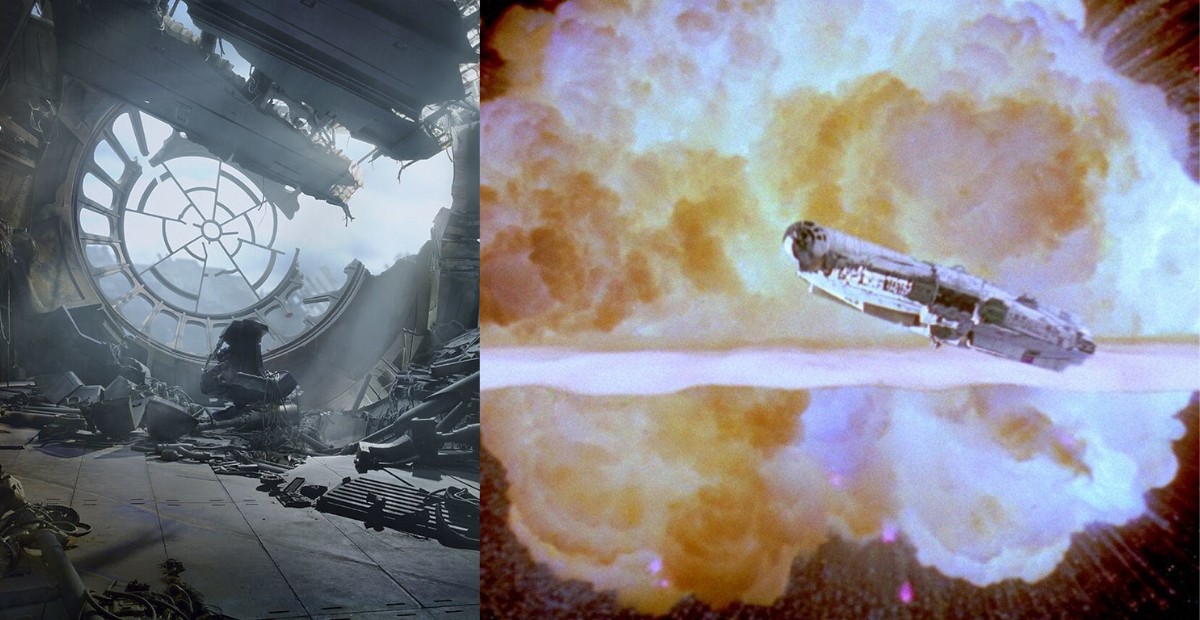So, you’re watching The Rise of Skywalker, right?
And suddenly there it is – the Emperor’s throne room, still hanging on after the Death Star’s explosion and a few decades of chilling underwater.
It’s one of those moments that makes many wonder how did that throne survive all of that?
Let’s get into, with a little help from Star Wars logic, some science, and, of course, that thing we all know and love – plot armor.
1. “Somehow, the Throne Room Returned” – Or, The Mighty Plot Armor
One of the first things people say about this scene is, “plot armor,” or as some fans like to joke, “rule of cool.”
I mean, the throne room survived simply because it looks cool.
Seeing Rey walk through this haunting ruin of the Emperor’s seat has a nostalgic pull, evoking that classic Star Wars feel.
Abrams himself seems to have leaned on this; he wanted to bring back iconic images from the original trilogy, and Palpatine’s throne is about as iconic as it gets.
But if we’re honest, there’s a lot of “just because it looks awesome” going on here. Why let science ruin a great visual?
For those of us who roll our eyes a little, it’s that odd mix of annoying but kind of understandable – Star Wars has always been a little bit fantasy, after all.
2. Explosion Physics – Why Some Big Chunks of Debris Stick Around
Okay, let’s talk about the actual explosion for a second. The Death Star blew up in a fiery mess, right?
And usually, that kind of destruction leaves nothing behind. But here’s the thing: in space, explosions behave differently than they do on Earth.
Without an atmosphere, the heat doesn’t dissipate the same way.
So while the Death Star’s core detonated, it’s possible that some larger chunks were flung into space instead of being vaporized.
That’s why, when we see the remains of the Death Star on Kef Bir, it’s these massive, intact pieces just lying there.
It’s like how people survive tornadoes or explosions with random things somehow untouched – furniture surviving in destroyed houses, fridges never moving an inch.
It’s extreme, but not impossible, that a big piece of the Death Star managed to survive.
3. Throne Room Position and Reinforcement – Because Palpatine Had Style
Another explanation that people bring up is the throne room’s actual position on the Death Star.
The Emperor didn’t sit right in the core; he was perched on this high tower, practically above the entire station.
So when the core exploded, that shockwave might’ve blown the throne room outward instead of straight into oblivion.
There’s also the idea that, as the Emperor’s primary spot, the throne room could have been extra-fortified.
We’ve seen Palpatine take every precaution, using clones, hiding Sith relics, so it’s not that crazy to think he would’ve had his throne room reinforced, just in case.
Even if it wasn’t officially stated in canon, it fits with Palpatine’s “better safe than sorry” attitude.
Or as someone humorously put it, “The throne room survived thanks to the power of Palpatine’s overconfidence.”
4. Canon Explanation Of “Abnormal Physics” (Yes, Really)
If you’re looking for a more official answer, canon does offer one, kind of. According to Wookieepedia, after the Death Star exploded, “abnormal physics” were at play.
The explosion supposedly flung large pieces of the station into hyperspace.
So, pieces of the Death Star, including the throne room, somehow ended up on Kef Bir, years later, weathered but still hanging on.
Honestly, “abnormal physics” is just Star Wars code for “we needed this for the plot,” but hey, at least they tried.
And the idea of pieces being ejected into hyperspace does add a little extra sci-fi flavor to the explanation. It’s weird, but so is most of Star Wars, so maybe we can let this one slide.
5. Hints of Palpatine’s Return
Now, let’s talk about the elephant (or throne) in the room – the fact that Palpatine’s throne is still standing.
The throne, somehow untouched by destruction, serves as a silent symbol, hinting at the Emperor’s continued presence.
It’s almost as if it’s there as a reminder, saying, “I’m not done yet.”
And, of course, that ends up being exactly the case later in The Rise of Skywalker, when Palpatine returns to unleash more havoc.
It’s like the throne was his anchor, a piece of the Emperor that refused to go down with the ship.
Palpatine surviving, though only hinted at in this scene, isn’t entirely shocking when you see his old throne intact.
The throne is more than just a chair, it’s a symbol of his legacy and a not-so-subtle foreshadowing of his grand return.
Maybe it wasn’t destroyed because, as far as Palpatine was concerned, he never truly left.

